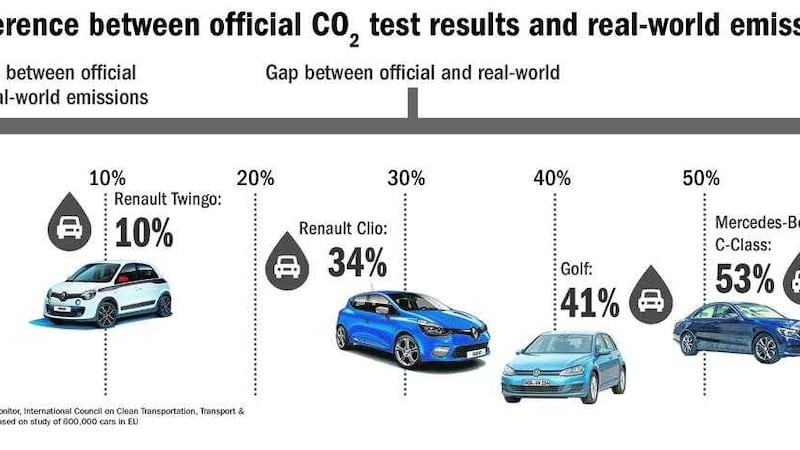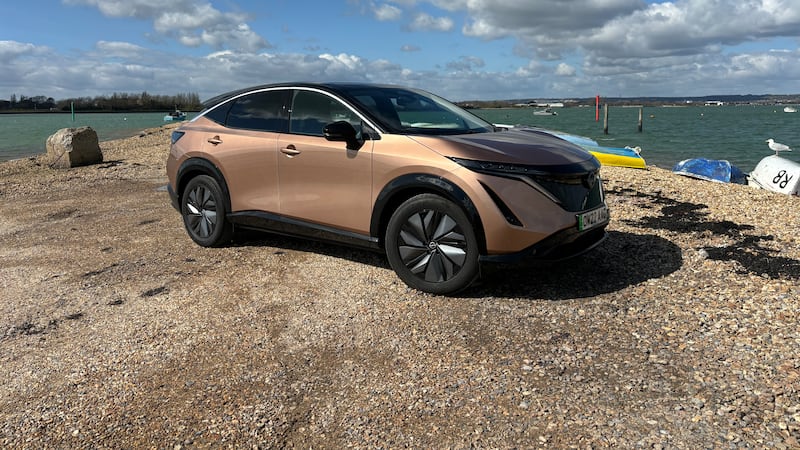VOLKSWAGEN'S con trick on its customers and regulators is far from the only way car manufacturers are attempting to fool drivers.
The test used in European countries to calculate fuel consumption and carbon dioxide output - a crucial measure because many EU car tax regimes are directly linked to CO2 - is also being ruthlessly exploited by carmakers.
It means that drivers' annual fuel bills are hundreds of pounds higher than they have been led to believe they would be. Extra CO2 is also being pumped into the atmosphere.
Research and data from Transport & Environment, a think tank campaigning for "smarter, greener transport in Europe", the International Council on Clean Transportation and Spritmonitor, a German organisation which monitors the running costs of 600,000 cars, shows that the difference between real-world fuel consumption and CO2 emissions and manufacturers' claims has grown from a gap to a chasm.
At more than 50 per cent, Mercedes-Benz, with its A-, C- and E-Class models, is identified as having the biggest gaps, with the BMW 5 Series and Peugeot 308 also performing very poorly.
Greg Archer from T&E believes that the "the Volkswagen scandal was just the tip of the iceberg".
"What lies beneath is widespread abuse by carmakers of testing rules enabling cars to swallow more than 50 per cent more fuel than is claimed," he says.
In a report called Mind the Gap, T&E explains that the gap between test results and real-world performance has increased from 8 per cent in 2001 to 31 per cent in 2012 and 40 per cent in 2014.
Beyond the environmental impact, the importance of all this is two-fold.
First, distorted test results deceive drivers who achieve much poorer fuel economy than is promised. It costs the average driver around £330 annually in additional fuel costs compared to the official results, T&E estimates.
Second, they also reduce government car tax receipts, and distort sales in favour of the carmakers best able to manipulate tests rather than those whose cars are most efficient in the real-world.
On average, only one-third of the improvement in emissions claimed to have been made since 2008 are delivered on the road, which means two-thirds of the alleged improvements are found only during the laboratory test.
Groups like T&E are clear that drivers are not to blame. Rather, car manufacturers are the cause of the problem "as obsolete official test results are being manipulated".
It is reckoned to be possible to explain deviations of around 40 per cent through manipulating test flexibilities.
This means manufacturers whose cars exceed this may be achieving their results using methods as yet unknown - as VW's so-called defeat device was before being exposed by authorities in the US.
Mercedes-Benz cars have an average gap between test and real-world performance of 48 per cent, though the latest A- C- and E-Class models have gaps of over 50 per cent, and the BMW 5 Series and Peugeot 308 are just below 50 per cent.
"Such gaps do not prove the use of 'defeat devices' by any manufacturer," says T&E.
"However, they do make it imperative to extend the scope of investigations into the use of this illegal technology to cover CO2 tests."
Other research has found that in 2001, 14 per cent of drivers could match their car's official test results. However, by 2014 practically no-one could drive this economically.
This inevitably leads to the conclusion that because neither driving style nor test requirements have changed, then it is the carmakers who are massaging the figures - perhaps by modifying the way the engine operates to produce artificially low test results.
"By testing a 'golden vehicle' and creative interpretation of the test procedures, carmakers are able to achieve multiple small improvements that lower the test results," says the T&E report.
"Cars tested using the official procedure without utilising flexibilities or specially preparing the car produce results 19-28 per cent higher than type approval values.
"All carmakers have been exploiting ever more flexibilities in the current official tests."
Across their ranges, Mercedes-Benz, Peugeot, Citroen and Vauxhall have the largest gaps. Only Toyota, says T&E, "would still meet its target without abusing test flexibilities".
"The only solution is a comprehensive investigation into both air pollution and fuel economy tests and all car manufacturers to identify whether unfair and illegal practices, like defeat devices, may be in use," says Mr Archer.
"There must also be a comprehensive overhaul of the testing system."








